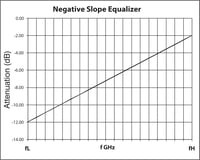Negative, Positive, Parabolic and Ripple gain equalizers. Simple solutions to your system slope problems.
Discover why government, commercial wireless, defense and others choose Spectrum Control’s gain equalizers.
Electronic warfare applications, test & measurement, MILCOM, Radar and more. Spectrum Control gain equalizers deliver simple solutions for your system slope problems. Designed, tested, manufactured and supported by our Inmet brand, Our gain equalizers have become the industry standard. We offer negative, positive, parabolic equalizers and fine grain equalizers, and in tubular and rectangular styles depending on slope and frequency requirements.

Choose the gain equalizers you need by frequency range, dB values (slope), connector type, body style, and any other requirements, including environmental. Both standard and custom-designed equalizers are available. Equalizers can be custom made to meet the desired performance parameters and package configurations for each application.
Features include:
Spectrum Control has engineering staff devoted exclusively to its gain equalizer product line. Rare in this industry. With over 2,500 active gain equalizer designs, and more than 200 customer applications worldwide. We can supply both standard and custom-designed equalizers to meet the needs of both commercial and defense.
| Negative Slope: typically used for applications to offset the excessive loss of long cable runs at high frequencies. The loss characteristic of the equalizer decreases linearly with frequency. | 
|
|

|
Positive Slope: typically used for applications to offset excessive loss of low frequencies where waveguide transmission characteristics require an equalizer that has increasing attenuation with frequency. | |
| Parabolic: used in applications where a broadband traveling wave tube (TWT) or solid state amplifiers (SSA) has maximum gain at or near the center of the frequency band. | 
|
|

|
Fine Grain: used to flatten gain ripple and spikes in a broadband application. The narrow band attenuation is adjustable in the bands where the ripple or spikes occur and flatten the response in these sub bands. |